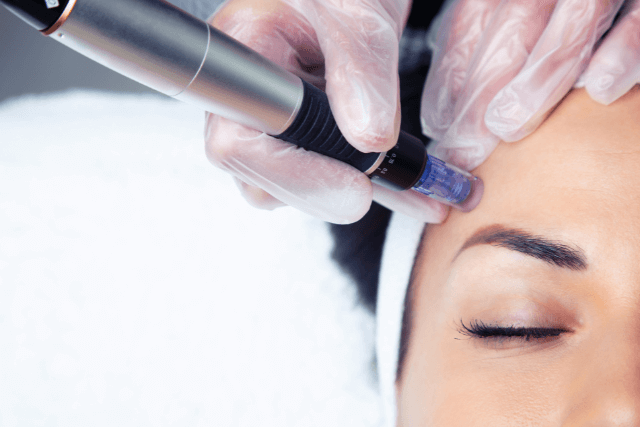Anal fistulas can cause persistent pain, discomfort, and significant distress. Consequently, finding the right anal fistula relief becomes a priority for anyone suffering from this condition. Fortunately, advances in medical technology offer several treatment options. Notably, FiLaC® (Fistula-tract Laser Closure) stands out as a minimally invasive laser treatment that provides a promising alternative to traditional surgery.
In this detailed guide, we will thoroughly explore the available treatment methods for anal fistula relief. We will carefully examine how each works, its benefits, risks, and who it suits best. Moreover, we will explain why FiLaC® represents a significant breakthrough in managing anal fistulas. Ultimately, this comprehensive overview will help you make an informed decision about your care.
Understanding Anal Fistulas
To fully grasp anal fistula relief, it is essential to understand what an anal fistula actually is. Essentially, an anal fistula is an abnormal tunnel or tract connecting the anal canal—the end part of the bowel—with the skin near the anus. This tract typically develops following an infection of the anal glands, which can lead to abscess formation. When the abscess drains, it sometimes leaves behind this persistent tunnel.
Because anal fistulas rarely heal on their own, they cause chronic symptoms such as pain, swelling, discharge, irritation, and recurrent infections. Thus, seeking effective anal fistula relief is critical for restoring comfort and quality of life.
Why Timely Anal Fistula Relief Matters
Moreover, untreated anal fistulas can worsen over time, resulting in complications like repeated abscesses and even systemic infections. Therefore, timely treatment not only alleviates pain and discomfort but also prevents more serious health issues.
Additionally, the psychological burden of living with a fistula can be considerable. Constant pain and embarrassment can affect mental well-being. As a result, obtaining appropriate relief is important both physically and emotionally.
Overview of Anal Fistula Relief Options
Fortunately, multiple treatment modalities exist for anal fistula relief. These range from traditional surgical methods to modern minimally invasive techniques such as FiLaC®. Each treatment offers distinct advantages and considerations.
Importantly, selecting the right approach depends on various factors, including the fistula’s complexity, location, your overall health, and personal preferences. Let’s examine the most widely used options in detail.
Traditional Surgical Treatments for Anal Fistula Relief
Surgery has long been the mainstay of anal fistula treatment. Generally, the goal is to remove or close the fistula tract while preserving continence.
Fistulotomy
Firstly, fistulotomy is the most common surgical technique. In this procedure, the surgeon carefully opens the entire fistula tract, allowing it to heal from the inside out. This method works well for simple, low fistulas with minimal risk to sphincter muscles.
However, in more complex fistulas, fistulotomy carries a risk of sphincter damage, which can lead to incontinence. Hence, surgeons often consider alternatives for fistulas involving significant muscle.
Seton Placement
Secondly, seton placement involves inserting a surgical thread through the fistula tract. This keeps the tract open for drainage, preventing abscess formation. Setons are often used as a first step in managing complex fistulas and may be combined with other surgeries later.
Advancement Flap Procedure
Thirdly, the advancement flap technique closes the internal opening of the fistula using a flap of healthy tissue. This approach aims to preserve sphincter function and is suitable for fistulas near the muscles.
Ligation of Intersphincteric Fistula Tract (LIFT)
Moreover, the LIFT procedure involves tying off the fistula tract between sphincter muscles to promote healing while protecting continence.
Surgical Benefits and Drawbacks
Surgical treatments provide a high likelihood of cure, particularly for simple fistulas. However, these procedures require general anesthesia, hospitalization, and extended recovery times. Additionally, the risk of incontinence, pain, and wound complications remains.
FiLaC® Fistula-tract Laser Closure: A Minimally Invasive Breakthrough
In contrast to traditional surgery, FiLaC® represents an innovative, minimally invasive treatment. This method uses a laser to close the fistula tract effectively.
How FiLaC® Works
During FiLaC®, a thin laser probe is gently inserted into the fistula tract. The laser emits controlled energy that heats and seals the tract walls. This causes the fistula to collapse and heal naturally without the need for cutting surrounding tissue.
Advantages of FiLaC®
Significantly, FiLaC® preserves sphincter muscles, drastically reducing the risk of incontinence. Furthermore, it involves smaller wounds, less pain, and faster recovery compared to conventional surgery. Clinical studies report high healing rates and patient satisfaction with FiLaC® treatment.
Suitability
FiLaC® suits patients with both simple and complex fistulas, especially those wishing to avoid the drawbacks of open surgery.
FiLaC® in Perspective
Thus, FiLaC® offers a promising alternative that balances effective fistula closure with minimal invasiveness, marking a substantial advancement in anal fistula relief.
Fibrin Glue and Collagen Plug: Less Invasive Alternatives
Additionally, fibrin glue and collagen plugs provide less invasive options for anal fistula relief.
- Fibrin Glue: This biological adhesive is injected into the fistula to seal it.
- Collagen Plug: A biodegradable plug is inserted into the tract to close it physically.
While these treatments avoid surgery and preserve sphincter function, their success rates vary and may not suit all fistula types.
Emerging Therapies for Anal Fistula Relief
Research continues to explore novel approaches like stem cell therapy and platelet-rich plasma injections. Although promising, these remain largely experimental and are not yet widely available.
Factors Influencing the Choice of Treatment
Several factors guide the choice of anal fistula relief method:
- Fistula complexity: Simple fistulas may respond well to fistulotomy, while complex ones might require FiLaC® or LIFT.
- Anatomical location: Fistulas involving sphincter muscles necessitate muscle-sparing techniques.
- Patient health: Chronic diseases like Crohn’s influence treatment choice.
- Previous treatments: Recurrent fistulas may require specialized approaches.
- Patient preferences: Concerns about recovery, risks, and invasiveness affect decisions.
In all cases, personalized evaluation by a colorectal specialist is vital.
Preparing for Treatment
Before receiving anal fistula relief, your healthcare provider will:
- Conduct a thorough medical history and physical exam.
- Use imaging techniques such as MRI or endoanal ultrasound to map the fistula.
- Discuss symptoms, expectations, and concerns.
- Explain treatment options, benefits, and risks.
- Proper preparation enhances outcomes and patient confidence.
What to Expect During and After Treatment
Treatment experiences vary widely:
- Traditional surgery usually requires anesthesia and possible hospital stay.
- FiLaC® is an outpatient procedure with minimal incisions and anesthesia options.
- Fibrin glue or collagen plugs often involve brief outpatient visits.
Post-treatment, recovery times differ. Surgery typically involves weeks of healing, wound care, and activity restrictions. FiLaC® and other minimally invasive methods offer faster recovery and less pain.
Risks and Potential Complications
Like all medical treatments, anal fistula relief procedures carry risks. These include:
- Infection
- Bleeding
- Fistula recurrence
- Incontinence (rare with minimally invasive techniques)
- Pain or discomfort
Selecting an experienced surgeon and adhering to post-care instructions reduce these risks.
Psychological Impact and Support
Living with an anal fistula can be emotionally challenging. Chronic pain and social embarrassment often cause anxiety and depression. Seeking timely anal fistula relief and supportive counseling improves mental health and overall well-being.
When to Seek Immediate Medical Attention
If you notice symptoms like increasing pain, swelling, fever, or worsening discharge, seek prompt medical care. Early intervention prevents complications.
Frequently Asked Questions About Anal Fistula Relief
Q: Can anal fistulas heal without treatment?
A: They rarely heal on their own and typically require medical intervention.
Q: Is FiLaC® painful?
A: Patients usually experience minimal discomfort; local or general anesthesia is used.
Q: Can fistulas recur after treatment?
A: Yes, but modern treatments reduce recurrence risk.
Q: How long does recovery take?
A: Recovery varies by procedure; minimally invasive treatments usually heal faster.
Conclusion: Anal Fistula Relief Needs a Personalized Approach
In conclusion, anal fistula relief includes various treatment options tailored to individual needs. While traditional surgery remains effective, minimally invasive treatments like FiLaC® provide excellent alternatives with faster recovery and lower risks.
Choosing the right treatment involves understanding fistula complexity, patient health, and personal preferences. Therefore, consulting a colorectal specialist is crucial to develop a safe, effective, and personalized care plan.
If you or someone you know suffers from an anal fistula, don’t delay seeking expert advice. Modern medicine offers many ways to achieve lasting relief and restore quality of life.



